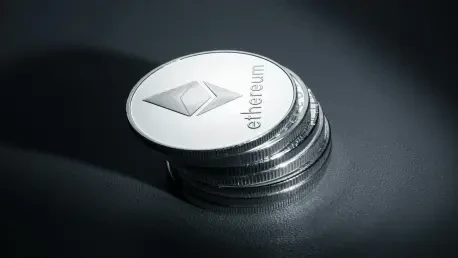In recent years, particularly as 2025 marks an era where cryptocurrencies continue to reshape finance, the focus on user control and data privacy has intensified. Tether, long recognized for its dominant stablecoin USDT, is spearheading a significant initiative with the unveiling of its Wallet Development Kit (WDK). This newly introduced open-source platform endeavors to furnish developers across the globe with the tools necessary to craft non-custodial crypto wallets. By championing such an initiative, Tether aims to redefine how digital assets are held and transacted, emphasizing user sovereignty and decentralization as central tenets of the Web3 ecosystem. Through this transformative stride, Tether sets its sights on a pioneering role within the burgeoning realm of decentralized finance (DeFi), offering a blueprint for more secure and autonomous crypto interactions.
The Rise of Uninterrupted Ownership
The shift toward non-custodial wallets arises from a fundamental principle advocating uninterrupted ownership and control over one’s digital assets. In stark contrast to custodial wallets—where service providers control users’ private keys and invariably act as intermediaries in transactions—non-custodial solutions offer complete personal oversight and operation of funds. This autonomy eliminates third-party governance, thus enhancing security and privacy by placing power directly in the users’ hands. Tether’s WDK eliminates reliance on API keys, which typically serve as access control barriers in custodial arrangements, hence fortifying the safeguarding and liberation of users’ cryptocurrency holdings. In this new paradigm, individuals become the architects of their financial destiny, free from boundaries established by intermediaries aiming to centralize control over digital wealth.
The emergence of non-custodial wallets, championed by Tether, signals a broader shift not just in technological preference but in ideological stance toward decentralization. Users, weary of the risks and limitations inherent in relinquishing control to external entities, demand solutions offering resilience against breaches and misuse of private information. Tether’s undertaking speaks to a burgeoning demand in the crypto arena where decentralization isn’t just a feature but an ethos that underpins the entire framework. It champions returning control back to individuals, a defining hallmark in the modern digital landscape where privacy and sovereignty are paramount. As Tether’s WDK opens new avenues for creating bespoke non-custodial wallets, it echoes a broader call to fundamentally redefine digital asset engagement.
Features of the Wallet Development Kit
At the heart of Tether’s WDK lies a suite of innovative features designed to elevate both the usability and functionality of non-custodial wallets, addressing prevailing challenges such as transaction costs and interoperability that often inhibit wider adoption. A particularly novel feature is the ability to execute gasless transactions. By utilizing account abstraction, the WDK allows users to send and receive digital currencies without bearing exorbitant gas fees. This facet not only democratizes financial access by lowering the entry threshold but also amplifies transaction frequency—a crucial factor propelling the practical utility of cryptocurrencies in day-to-day exchanges, unencumbered by prohibitive costs.
The WDK also excels in fostering cross-chain compatibility, a feature essential for achieving a seamless and interconnected blockchain ecosystem. By facilitating interactions over multiple blockchain networks, including non-Ethereum Virtual Machine (EVM) compatible chains, Tether’s kit addresses interoperability challenges, often a formidable hurdle in blockchain innovation. This capability enables users to navigate across various platforms seamlessly without the need for intricate intermediary processes, enhancing the ecosystem’s cohesion. Additionally, the emphasis on intuitive user interfaces ensures that even novices can engage effortlessly with decentralized networks, paving the way for unprecedented levels of participation and financial inclusion.
Strategic Implications and Market Dynamics
Tether’s foray into non-custodial crypto wallet development is emblematic of its broader strategic maneuver to diversify beyond its conventional stablecoin offerings. The release of the WDK marks a significant pivot towards embracing blockchain technology’s full breadth by not only enhancing the user experience but also facilitating an arena where technology and self-custody converge. Tether’s expansive ventures span various tech sectors, underscoring its intent on establishing a sophisticated technological portfolio. From its substantial investment in the burgeoning video platform Rumble to its ongoing alliance with Twenty One’s Bitcoin-focused initiatives, Tether’s engagements illustrate a commitment to spearheading transformative digital asset paradigms.
Within this landscape, Tether aims to position itself as a central player, driving innovations that reimagine the meaning of user-controlled finance. As blockchain solutions gain momentum, the emphasis within the industry on user empowerment and trustless economic models aligns well with Tether’s initiatives. This shift towards decentralization not only redefines transactional frameworks but also champions a more inclusive technological narrative, fostering ecosystems where control is in the hands of those who participate. Through the WDK, Tether is not just contributing to technology; it is steering the discourse around decentralization and sowing seeds for a financial future rooted in trust and security.
Looking Ahead: The Future of Decentralized Finance
The growing favor for non-custodial wallets, exemplified by Tether’s initiatives, reflects a fundamental shift in how individuals wish to manage their digital assets. Unlike custodial wallets, where a third party holds the private keys and acts as an intermediary, non-custodial wallets provide full autonomy, allowing users direct control over their funds. This genre of wallets enhances security and privacy by removing the need for third-party involvement, thereby minimizing potential vulnerabilities related to misuse and breaches. Tether’s WDK, for instance, reduces dependency on API keys, which are often necessary for access in custodial settings. This evolution embodies a movement toward decentralization, aligning with growing concerns over digital sovereignty and privacy. In this framework, users not only safeguard their assets but also become active participants in shaping their financial futures. The rise of non-custodial solutions like Tether’s WDK underscores an expanding demand for user empowerment, enhancing resilience against external control and reinforcing the ethos of decentralization in the digital finance realm.









